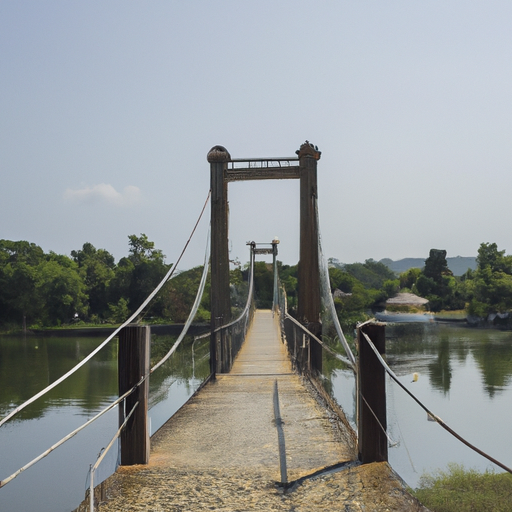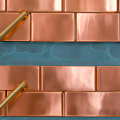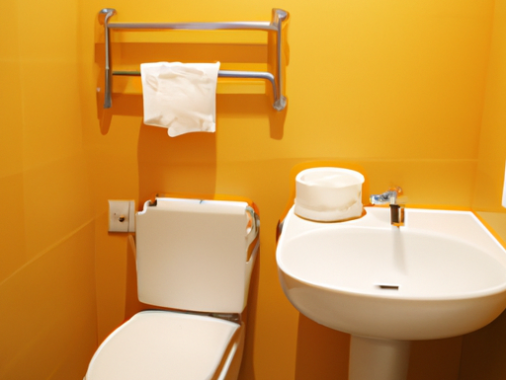-
Table of Contents
- Introduction
- The History of Famous Bridges Around the World
- The Engineering Behind Suspension Bridges
- The Benefits of Building Bridges
- The Different Types of Bridges and Their Uses
- The Most Spectacular Bridges in the World
- The Challenges of Building Bridges in Remote Locations
- The Impact of Bridges on Local Economies
- Q&A
- Conclusion
Introduction
Bridges are an integral part of our lives, connecting us to places and people. They are a symbol of progress and a reminder of our ability to overcome obstacles. From the ancient stone arch bridges of the Roman Empire to the modern suspension bridges of today, bridges have been a part of our history for centuries. In this article, we will explore some of the most innovative bridge ideas and designs from around the world. We will look at the engineering feats that make these bridges possible, as well as the creative solutions that have been used to make them aesthetically pleasing. We will also discuss the importance of bridges in our lives and how they can be used to bring communities together.
The History of Famous Bridges Around the World
Bridges have been a part of human civilization for centuries, connecting people and cultures in ways that were previously unimaginable. From the ancient stone arch bridges of the Roman Empire to the modern suspension bridges of today, bridges have been a symbol of progress and ingenuity. This article will explore some of the most famous bridges around the world and the stories behind them.
The Brooklyn Bridge in New York City is one of the most iconic bridges in the world. Built in 1883, it was the first steel-wire suspension bridge in the United States. Spanning the East River, the bridge connects the boroughs of Manhattan and Brooklyn. It is one of the oldest bridges in the United States and is a National Historic Landmark.
The Golden Gate Bridge in San Francisco is another iconic bridge. Completed in 1937, it is a suspension bridge that spans the Golden Gate strait, connecting San Francisco to Marin County. It is one of the most photographed bridges in the world and is an internationally recognized symbol of San Francisco.
The Tower Bridge in London is one of the most recognizable bridges in the world. Built in 1894, it is a combined bascule and suspension bridge that spans the River Thames. It is a Grade I listed building and is one of the most recognizable symbols of London.
The Sydney Harbour Bridge in Australia is one of the most iconic bridges in the world. Completed in 1932, it is the world’s largest steel arch bridge and spans the Sydney Harbour. It is a popular tourist attraction and is a symbol of Sydney.
The Ponte Vecchio in Florence, Italy is one of the oldest bridges in the world. Built in 1345, it is a medieval stone arch bridge that spans the Arno River. It is a popular tourist attraction and is a symbol of Florence.
The Akashi Kaikyo Bridge in Japan is the longest suspension bridge in the world. Completed in 1998, it spans the Akashi Strait and connects the city of Kobe to Awaji Island. It is an engineering marvel and is a symbol of Japan’s technological prowess.
These are just a few of the many famous bridges around the world. Each bridge has its own unique story and is a testament to the ingenuity and creativity of human civilization.
The Engineering Behind Suspension Bridges
Suspension bridges are a type of bridge that are characterized by the use of cables to support the deck of the bridge. These cables are suspended from towers and anchored at each end of the bridge. Suspension bridges are used to span large distances, and are often used to cross rivers, valleys, and other bodies of water.
The engineering behind suspension bridges is complex and requires a great deal of knowledge and skill. The design of a suspension bridge must take into account the weight of the bridge, the forces of the wind, and the forces of the water. The bridge must also be designed to withstand seismic activity and other environmental factors.
The towers of a suspension bridge are typically made of steel or concrete. The towers are designed to support the weight of the bridge and the forces of the wind and water. The towers are connected to the deck of the bridge by cables. The cables are made of steel and are designed to be flexible and strong. The cables are connected to the deck of the bridge at regular intervals, and are also connected to the towers.
The deck of a suspension bridge is typically made of steel or concrete. The deck is designed to support the weight of the bridge and the forces of the wind and water. The deck is also designed to be flexible and strong. The deck is connected to the cables at regular intervals, and is also connected to the towers.
The foundations of a suspension bridge are typically made of concrete. The foundations are designed to support the weight of the bridge and the forces of the wind and water. The foundations are also designed to be flexible and strong. The foundations are connected to the towers and the deck of the bridge.
The engineering behind suspension bridges is complex and requires a great deal of knowledge and skill. The design of a suspension bridge must take into account the weight of the bridge, the forces of the wind, and the forces of the water. The bridge must also be designed to withstand seismic activity and other environmental factors. By taking all of these factors into account, engineers can create a bridge that is safe, strong, and able to span large distances.
The Benefits of Building Bridges
Building bridges is an important part of civil engineering and construction. Bridges are used to connect two pieces of land that are separated by a body of water or other obstacle. They are also used to provide access to areas that would otherwise be inaccessible. Building bridges has many benefits, both for the environment and for people.
One of the most important benefits of building bridges is that they provide a safe and efficient way to cross bodies of water. This is especially important in areas where there is no other way to cross, such as in remote areas or in areas with dangerous currents. Bridges also provide a way for people to access areas that would otherwise be difficult or impossible to reach. This can be especially beneficial in areas with limited transportation options.
Building bridges also has environmental benefits. Bridges can help reduce the amount of pollution that is created by vehicles. This is because bridges reduce the amount of traffic that needs to cross a body of water, which in turn reduces the amount of emissions that are released into the atmosphere. Bridges also help to reduce the amount of sediment that is washed into rivers and streams, which can help to improve water quality.
Finally, building bridges can also have economic benefits. Bridges can help to reduce the cost of transportation, as they provide a more efficient way to cross bodies of water. This can help to reduce the cost of goods and services, as well as reduce the cost of travel. This can be especially beneficial in areas with limited transportation options.
In conclusion, building bridges has many benefits, both for the environment and for people. Bridges provide a safe and efficient way to cross bodies of water, help to reduce pollution, and can help to reduce the cost of transportation. For these reasons, building bridges is an important part of civil engineering and construction.
The Different Types of Bridges and Their Uses
Bridges are structures that are built to span physical obstacles such as rivers, valleys, or roads, and they are used to provide a safe and convenient passage for people and vehicles. There are many different types of bridges, each with its own unique design and purpose.
The most common type of bridge is the beam bridge, which is constructed from a series of horizontal beams that are supported by vertical columns. Beam bridges are typically used to span short distances, such as rivers or roads, and they are often used in residential areas.
Another type of bridge is the arch bridge, which is constructed from a series of curved arches that are supported by vertical columns. Arch bridges are typically used to span longer distances, such as rivers or valleys, and they are often used in rural areas.
The truss bridge is another type of bridge that is constructed from a series of triangular frames that are supported by vertical columns. Truss bridges are typically used to span longer distances, such as rivers or valleys, and they are often used in rural areas.
The suspension bridge is a type of bridge that is constructed from a series of cables that are suspended between two towers. Suspension bridges are typically used to span longer distances, such as rivers or valleys, and they are often used in urban areas.
Finally, the cable-stayed bridge is a type of bridge that is constructed from a series of cables that are connected to a single tower. Cable-stayed bridges are typically used to span longer distances, such as rivers or valleys, and they are often used in urban areas.
No matter what type of bridge is used, they all serve the same purpose: to provide a safe and convenient passage for people and vehicles. Each type of bridge has its own unique design and purpose, and it is important to choose the right type of bridge for the job.
The Most Spectacular Bridges in the World
Bridges are some of the most impressive feats of engineering and architecture in the world. From the ancient stone archways of the Roman Empire to the modern marvels of the 21st century, bridges have been connecting people and places for centuries. Here are some of the most spectacular bridges in the world.
The Golden Gate Bridge in San Francisco, California is one of the most iconic bridges in the world. This suspension bridge spans the Golden Gate Strait, connecting San Francisco to Marin County. The bridge is 1.7 miles long and is painted an iconic International Orange color.
The Brooklyn Bridge in New York City is another iconic bridge. This hybrid cable-stayed/suspension bridge spans the East River and connects Manhattan to Brooklyn. The bridge is one of the oldest in the United States and is a National Historic Landmark.
The Millau Viaduct in France is one of the tallest bridges in the world. This cable-stayed bridge spans the Tarn Valley and is the tallest bridge in the world, with a maximum height of 1,125 feet. The bridge is a marvel of modern engineering and is a popular tourist attraction.
The Akashi Kaikyo Bridge in Japan is the longest suspension bridge in the world. This bridge spans the Akashi Strait and connects the city of Kobe to Awaji Island. The bridge is 6,532 feet long and is an impressive feat of engineering.
The Tower Bridge in London is one of the most recognizable bridges in the world. This bascule and suspension bridge spans the River Thames and is a symbol of London. The bridge is 800 feet long and is a popular tourist attraction.
These are just a few of the most spectacular bridges in the world. From ancient stone archways to modern marvels, bridges have been connecting people and places for centuries.
The Challenges of Building Bridges in Remote Locations
Building bridges in remote locations can be a challenging endeavor. The lack of access to resources, the difficulty of transporting materials, and the potential for extreme weather conditions can all make the process of bridge construction difficult.
One of the primary challenges of building bridges in remote locations is the lack of access to resources. In many cases, the materials needed for bridge construction must be transported from distant locations, which can be costly and time-consuming. Additionally, the lack of access to skilled labor can make it difficult to complete the project in a timely manner.
Another challenge of building bridges in remote locations is the difficulty of transporting materials. In many cases, the materials must be transported over long distances, which can be difficult and expensive. Additionally, the terrain in remote locations can be difficult to traverse, making it difficult to transport the materials to the construction site.
Finally, extreme weather conditions can also present a challenge when building bridges in remote locations. In many cases, the weather can be unpredictable and extreme, making it difficult to complete the project in a timely manner. Additionally, the extreme weather can also cause damage to the materials, making it necessary to replace them, which can be costly.
Overall, building bridges in remote locations can be a challenging endeavor. The lack of access to resources, the difficulty of transporting materials, and the potential for extreme weather conditions can all make the process of bridge construction difficult. However, with careful planning and the right resources, it is possible to successfully complete a bridge construction project in a remote location.
The Impact of Bridges on Local Economies
Bridges are essential components of infrastructure that are vital to the functioning of local economies. They provide a means of transportation for goods and services, allowing businesses to move their products to market and customers to access goods and services. Bridges also provide access to employment opportunities, allowing people to travel to and from work. As such, bridges have a significant impact on local economies.
The most obvious impact of bridges on local economies is the increased mobility they provide. By connecting two points, bridges allow for the movement of goods and services, which can lead to increased economic activity. This increased mobility can lead to increased trade, allowing businesses to access new markets and customers to access new products. This increased trade can lead to increased economic growth, as businesses are able to expand their operations and hire more employees.
Bridges also have a positive impact on local economies by providing access to employment opportunities. By connecting two points, bridges allow people to travel to and from work, which can lead to increased employment opportunities. This increased access to employment can lead to increased wages and improved living standards for local residents.
In addition, bridges can have a positive impact on local economies by providing access to recreational activities. By connecting two points, bridges can provide access to recreational activities such as fishing, boating, and hiking. This increased access to recreational activities can lead to increased tourism, which can lead to increased economic activity.
Finally, bridges can have a positive impact on local economies by providing access to essential services. By connecting two points, bridges can provide access to essential services such as healthcare, education, and public transportation. This increased access to essential services can lead to improved quality of life for local residents.
In conclusion, bridges have a significant impact on local economies. They provide increased mobility, access to employment opportunities, access to recreational activities, and access to essential services. As such, bridges are essential components of infrastructure that are vital to the functioning of local economies.
Q&A
1. What is the purpose of a bridge?
A bridge is a structure built to span physical obstacles such as a body of water, valley, or road, for the purpose of providing passage over the obstacle.
2. What are the different types of bridges?
The different types of bridges include arch bridges, beam bridges, suspension bridges, cable-stayed bridges, truss bridges, and movable bridges.
3. What materials are used to build bridges?
The materials used to build bridges vary depending on the type of bridge and the environment in which it is being built. Common materials used to build bridges include steel, concrete, timber, and stone.
4. How long do bridges typically last?
The lifespan of a bridge depends on the type of bridge and the environment in which it is built. Generally, bridges can last anywhere from 50 to 100 years.
5. What are the benefits of building bridges?
Building bridges can provide a number of benefits, including improved transportation, increased access to resources, and improved safety.
6. What are the challenges of building bridges?
Building bridges can be a challenging process due to the need to consider factors such as the environment, the materials used, and the cost of construction.
7. What are some innovative bridge designs?
Some innovative bridge designs include the Helix Bridge in Singapore, the Rolling Bridge in London, and the Golden Gate Bridge in San Francisco.
Conclusion
In conclusion, bridges are an important part of our infrastructure and have been used for centuries to connect people and places. They are a symbol of progress and innovation, and have been used to span rivers, valleys, and other obstacles. Bridges are also a great way to bring communities together, and can be used to create a sense of unity and pride. With the right design and materials, bridges can be built to last for generations, and can be a source of pride for the people who use them.




